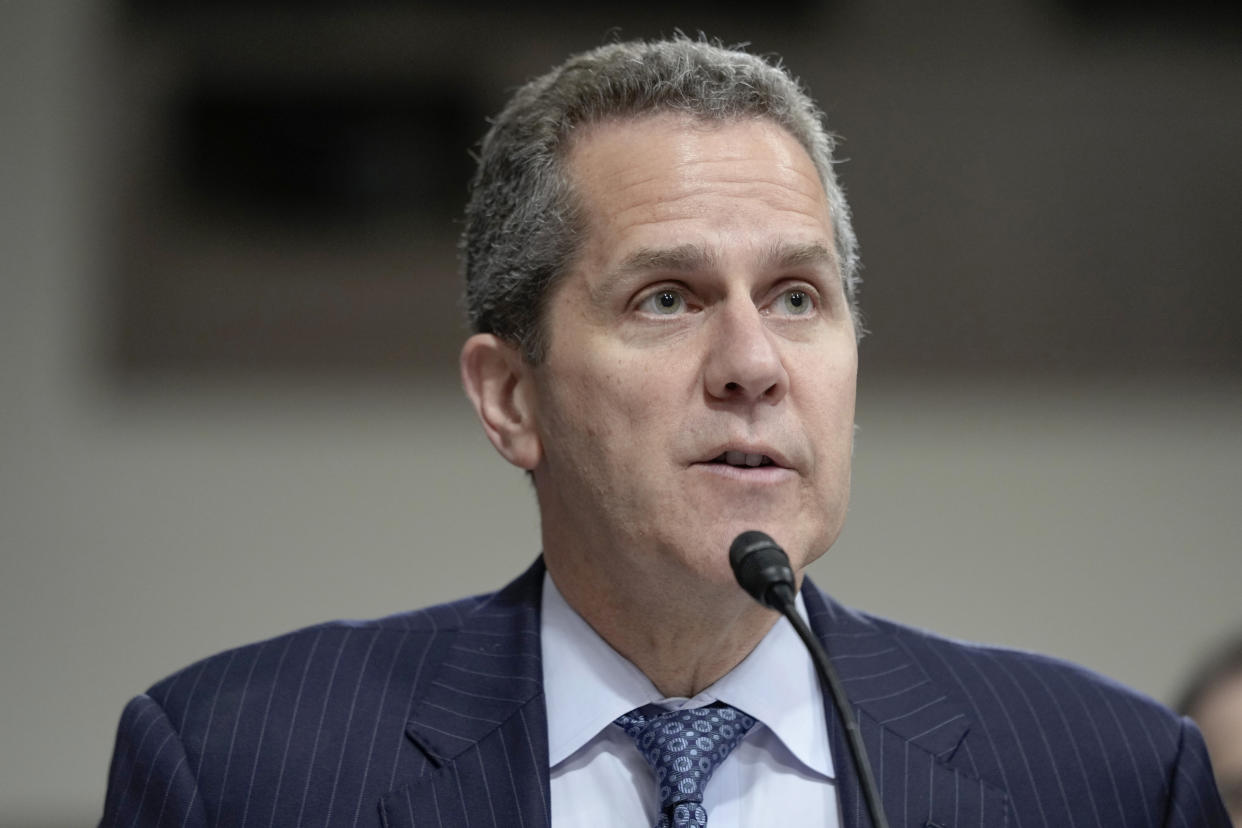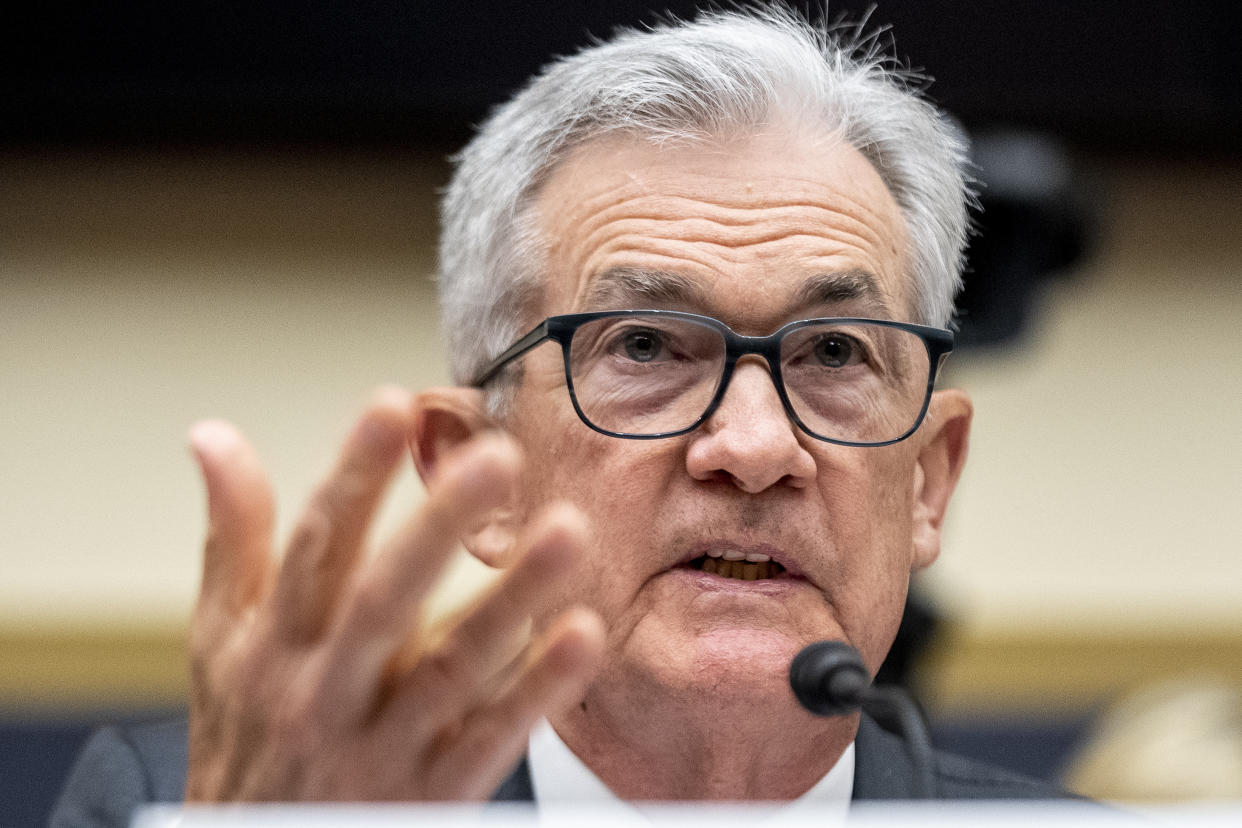All 23 banks survive Fed's 2023 stress test
All 23 US banks that participated in a new Federal Reserve stress test would be able to withstand a severe global recession, demonstrating the strength of the biggest financial institutions at a time when the banking industry still is on uncertain ground.
Results released by the Fed Wednesday show that these banks would have enough capital on hand to absorb losses and continue lending even if unemployment were to hit 10% and the stock market were to plunge 45%.
Their projected losses would amount to $541 billion under that hypothetical scenario.
The biggest of the group — JPMorgan Chase (JPM), Bank of America (BAC), Citigroup (C), Wells Fargo (WFC), Goldman Sachs (GS), and Morgan Stanley (MS) — all would have capital buffers well in excess of the Fed’s 4.5% minimum requirement under this extreme scenario.
The same goes for the mid-sized regional banks that were a part of this test, including PNC (PNC), Truist (TFC), and M&T (MTB).
"Today’s results confirm that the banking system remains strong and resilient," Fed Vice Chair for Supervision Michael Barr said.
"At the same time, this stress test is only one way to measure that strength. We should remain humble about how risks can arise and continue our work to ensure that banks are resilient to a range of economic scenarios, market shocks, and other stresses."

Results did vary widely across the industry, however. The bank with the highest capital ratio under the Fed’s “severely adverse scenario” was Charles Schwab (SCHW), one of the lenders that came under a lot of investor scrutiny earlier this year as other banks stumbled.
The bank with the lowest ratio was Citizens Financial (CFG), a regional bank based in Rhode Island. Other regional banks such as US Bancorp (USB) and Truist also ended the test with smaller buffers than their giant rivals.
But the giants of the industry also posted the biggest projected net income losses under the Fed’s “severely adverse scenario,” led by Citigroup's $34.9 billion. Wells Fargo had $32.9 billion and JPMorgan had $30.1 billion.
Goldman, perhaps the most storied name on Wall Street, had the highest amount of estimated losses from commercial estate loans and credit cards.
It also recorded the highest losses in separate Fed assessments of how the trading books of the biggest banks would perform under “global and exploratory market shocks.”
Tougher rules
The Fed’s test, an annual rite of the industry since the 2008 financial crisis, is the first to be released since turmoil roiled the banking world following the failure of First Republic, Silicon Valley Bank, and Signature Bank this spring.
Banks typically use the results of the annual Fed stress tests to determine how much they should have on their balance sheet to absorb shocks and how much they have left over for dividends and buybacks. Some banks are expected to make announcements late Friday about how much money they now plan to return to shareholders.
But banks are also bracing for a new set of higher capital requirements from the Fed that will force some of them to hold even greater buffers against losses.
These tougher rules were already in the works before the collapse of several regional banks in the spring, but regulators made it clear in the wake of those troubles that they wanted to make sure their new approach applied to mid-sized institutions similar in size to a First Republic or a Silicon Valley Bank. Both had more than $200 billion in assets at the time of their failures.

Federal Reserve Chair Jerome Powell said last week he does not expect smaller community banks to be subject to the higher capital requirements, which are expected to be proposed sometime this summer. Institutions with at least $100 billion in assets may have to comply.
Forcing banks to amass greater buffers has pros and cons for lenders, regulators, and the economy. It will increase the stability of these institutions, but it will also make it more difficult to earn robust profits and could cause banks to pull back on certain types of lending.
Powell discussed this balance last week.
“It’s always a trade-off,” he said. “More capital means more stable, resilient banking systems. It can also at the margins mean less credit availability…there is no perfect way to assess that balance.”
Barr, the vice chair of supervision, said last week the Fed is also exploring "reverse stress testing" that could be used as a tool to make banks more resilient by helping supervisors recognize more exogenous issues that could go wrong instead of patterns from the past regulators have been trained to catch.
Meeting a test
The Fed first started applying stress tests to a wide group of banks in 2009 as the last financial crisis was still raging.
It was mandated annually by law for institutions with more than $100 billion in assets as part of legislation that passed in 2010. A law passed in 2018 tailored the tests by banks’ size, meaning those in the range of $100 billion-$250 billion would be tested every other year.
Democrats and regulators have been critical of that 2018 adjustment, arguing it could have helped prevent the problems that amassed at Silicon Valley Bank, which had not been subjected to a stress test before it failed.

Some in this year's test — BMO Financial, Citizens, M&T, and RBC US Group — were among the every-other-year banks that weren’t scheduled to be tested again until 2024.
But the Fed required BMO, Citizens, and M&T to be tested again in 2023, and RBC also opted in to the 2023 exam. All four banks had capital of 6.4% and higher, above the 4.5% required.
This year the Fed examined how 23 banks would fare under a severe global recession that included severe stress in commercial real estate. In such a scenario unemployment spikes to 10%, home prices and commercial real estate plunge about 40%, the stock market plummets 45%, market volatility jumps and corporate bond yields rise.
All 23 banks in aggregate would have lost $541 billion. Yet they would still have capital equal to 10.1% of total assets weighted by risk. Well above the 4.5% the Fed requires.
The biggest losses
The $541 billion in total projected losses includes more than $100 billion from commercial real estate and residential mortgages and $120 billion in credit card losses, both higher than the losses projected in last year’s test.
The banks with the biggest commercial real estate losses were Goldman, with $16 billion, followed by Morgan Stanley ($13.7 billion) and Citizens ($12.4 billion).
Goldman also had the highest credit card losses, with $24.7 billion, followed by Capital One ($22.2 billion) and TD Group ($21.4 billion).

Eight banks with large trading operations were also tested against a "global market shock" tied to their trading positions. For the first time, this year's test also tested the trading books of those banks against a second "exploratory market shock."
The Fed said the global market shock was a severe recession with fading inflation expectations; the exploratory market shock tested a less severe recession with greater inflationary pressures.
The results from those exams showed that the trading books of the largest banks were resilient amid a rising rate environment.
The biggest projected losses belonged to Goldman, with $21.2 billion lost in the global market shock scenario and $18.1 billion in the exploratory market shock component.
Click here for the latest stock market news and in-depth analysis, including events that move stocks
Read the latest financial and business news from Yahoo Finance
